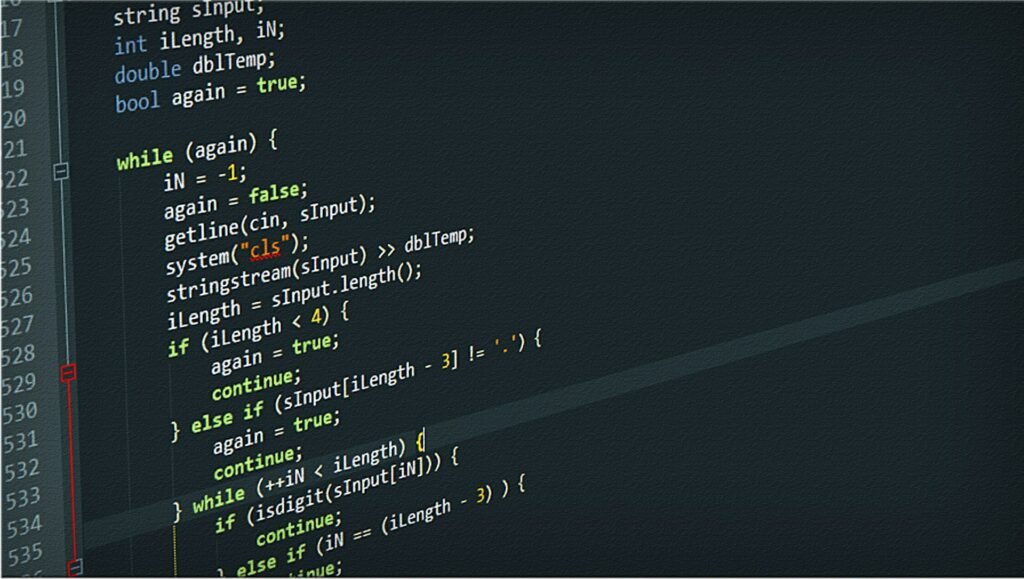Scipy
Scipy, or scientific python, is a robust open-source python library used for technical and scientific computing. For numerical operations, data manipulation, optimization, signal and image processing, linear algebra, statistics, and other tasks, it offers a broad range of features. Numpy, another essential python library for numerical computation, serves as the foundation for scipy.

What is scipy
Scipy is an open-source python library for scientific computing. It adds capability for different scientific and technical computing jobs on top of numpy, another essential library for numerical computations.
Math, statistics, optimization, signal and image processing, linear algebra, interpolation, integration, and other topics are all covered by the scipy library. It provides a thorough set of tools and techniques to make scientific computation and data analysis easier.
Scipy has a number of important features and modules.
- Numerical integration – single- and multi-dimensional numerical integration functions are available in scipy, along with methods for adaptive numerical integration.
- Optimization – scipy provides techniques for limited and unconstrained optimization issues, including nonlinear optimization, least squares fitting, and root discovery.
- Linear algebra – scipy offers a comprehensive collection of functions for operations in linear algebra, including matrices, linear systems, eigenvalue issues, and singular value decomposition.
- Signal and image processing – scipy have modules for filtering, fourier analysis, wavelet transformations, image editing, and feature extraction, among other things.
- Statistical functions – scipy provides a wide range of statistical functions and distributions for probability distributions, regression analysis, descriptive statistics, and more.
- Sparse matrix operations – scipy offers tools and methods for effectively handling sparse matrices, which are important for complex computations and issues that include a high number of zero values.
- Interpolation – scipy contains spline interpolation methods in addition to interpolation routines for smoothing and interpolating data points.
- Special functions – scipy provides a wide range of unique mathematical functions, including elliptic, bessel, and gamma functions.
Last but not least, scipy is a strong library that significantly increases python’s processing capacity for scientific and technical applications. It is utilized extensively in many different fields, including, among others, physics, engineering, data science, and computational biology.
Advantage and disadvantage of scipy
Advantages of scipy.
- Extensive functionality – broad variety of numerical methods and tools for scientific computing scipy offers a broad variety of numerical methods and tools for scientific computing in fields including mathematics, statistics, optimization, signal and image processing, and more. It provides a vast array of functions that can reduce the time and effort required to accomplish complicated computations.
- Integration with numpy – numpy, which offers effective and robust array operations in python, is the foundation upon which scipy is constructed. By offering smooth compatibility between scipy and numpy, this integration enables users to make use of both libraries’ advantages.
- Open-source and free – scipy is a free project that is available for both business and non-commercial usage. It is offered under a permissive license. Within the scientific community, this accessibility promotes cooperation, contributions, and general acceptance.
- Comprehensive documentation – scipy offers thorough documentation that contains in-depth justifications, illustrations, and api references. Users may more easily get started and explore the library’s possibilities by using the documentation as a great resource for acquiring an understanding of its features.
- Active development and community support – scipy benefit from a vibrant development community that works tirelessly to keep the library up-to-date and effective. Through forums, email lists, and online resources, this vibrant community also helps, promoting knowledge exchange and problem-solving.
Disadvantages of scipy.
- Learning curve – scipy has a learning curve connected with understanding and successfully using its numerous modules and functions because of its wide versatility. Users might need to spend some time becoming accustomed to the library’s operations.
- Performance restrictions – although scipy offers effective algorithms for a variety of scientific calculations, there may be circumstances in which specialized libraries or lower-level languages give even better performance for certain jobs. Users may need to think about different strategies or interact with other libraries in such circumstances.
- Size and dependencies – scipy is a huge library that depends on a number of other libraries. Installing and managing the necessary packages and dependencies may take more work if space or dependency management issues.
- Limited data visualization – scipy has limited capabilities for complex data visualization, although providing features for data manipulation and analysis. To produce complex visualizations, users would need to interface with additional tools like matplotlib or plotly.
- Platform compatibility – despite being built largely for python, scipy may only be partially compatible with some platforms or operating systems. Users should verify compatibility with their particular environment or seek advice from the documentation and community.
Best features of scipy
Scipy is a robust python library for scientific computing that offers a wide range of capabilities for a variety of technical and scientific computing activities.
Here are a few of scipy’s greatest attributes.
- Numerical integration and optimization – scipy has effective algorithms for root discovery, numerical integration, and numerical optimization. You may tackle challenging mathematical problems using its methods, which include minimizing for optimization and quad for numerical integration.
- Linear algebra operations – scipy provides a complete set of tools for performing operations in linear algebra. It offers functions for manipulating matrices, resolving linear systems of equations, computing eigenvalues, and factorizing matrices (lu, qr, cholesky, etc.). Scientific simulations, machine learning, and data analysis all benefit greatly from these talents.
- Signal and image processing – a comprehensive range of signal processing tools, including filtering, convolution, spectrum analysis, and wavelet transformations, are included in scipy. Additionally, it has features for reading, writing, and processing photos as well as capabilities for manipulating images. These properties are useful for computer vision applications as well as jobs like audio and picture processing.
- Statistical functions – a wide range of statistical functions for probability distributions, descriptive statistics, testing of hypotheses, and regression analysis are available in scipy. It offers resources for running t-tests, anova, statistical moments computation, fitting data to distributions, and many other tasks. It is a useful tool for statistical analysis and modelling because of these features.
- Numerical methods – for interpolation, numerical differentiation, and the numerical solution of ordinary differential equations (odes) and partial differential equations (pdes), scipy offers a wide range of numerical methods. In physics, engineering, and computational biology, among other scientific fields, these algorithms are crucial for solving mathematical models.
- Support for sparse matrices – scipy offers effective data structures and techniques for dealing with sparse matrices. When working with huge, largely empty matrices, sparse matrices are advantageous because they enable more memory-efficient calculations. The sparse matrix functions in scipy make it possible to perform operations on sparse matrices such matrix multiplication, linear system solution, and eigenvalue calculations.
- Integration with numpy – scipy, another essential python library for numerical computation, is built on top of numpy. The efficiency is improved and data exchange is easy because to the close integration of scipy and numpy. Utilizing both libraries’ advantages, it is simple to transfer data between numpy arrays and scipy sparse matrices.
How to install scipy
You can follow these instructions to install scipy.
- Check to see if python is set up – to see if python is installed, open a command window or terminal and execute python –version or python3 –version. Install python if it isn’t already by downloading it from the official website (https://www.python.org).
- Update pip – pip is a python package manager that enables the installation of third-party libraries. Run the command mentioned above to make sure pip is installed on your system using the most recent version.
Python -m pip install –upgrade pip
- Set up numpy – scipy requires numpy, thus you must first set up numpy. Run the command line.
Python -m pip install numpy
- Install scipy – after numpy is set up, use the following command to install scipy.
Python -m pip install scipy
The python package index (pypi) will be used to obtain and install the most recent version of scipy when you run this command.
- Check the installation – once the setup is complete, you can check that scipy was installed correctly by importing it into a python interactive shell.
Python
>>> import scipy
>>> print(scipy.__version__)
- If the version number prints correctly, scipy has been installed successfully.
Make sure your virtual environment is enabled before performing the installation scripts if you’re using one.
Scipy in python
Scipy is a robust python library for scientific computing that offers a wide range of capabilities for a variety of technical and scientific computing activities. It is constructed on top of numpy, another essential python library for numerical computing. By offering sophisticated scientific computing techniques and routines, scipy enhances numpy’s functionality.
Scipy library in python
A robust open-source scientific computing toolkit for python, scipy offers a large selection of functions for scientific and technical computing. It adds new features and tools for doing different scientific activities on top of numpy.
Each sub-package in the scipy collection focuses on a different aspect of scientific computing.
Here are a few of scipy’s most important sub-packages.
- Scipy.integrate – offers functions for solving ordinary differential equations and numerical integration.
- Scipy.optimize – provides optimization methods for minimizing or maximizing functions, locating roots, fitting curves, and more.
- Scipy.linalg – provides functions for matrix operations, solving linear problems, computing eigenvalues, and factorising matrices in linear algebra.
- Scipy.stats – offers a broad selection of statistical functions for regression analysis, hypothesis testing, and probability distributions.
- Scipy.signal – provides filtering, spectral analysis, convolution, and wavelet transform routines for signal processing.
- Scipy.sparse – offers tools for memory-efficient sparse matrix operations on big, largely empty matrices.
- Scipy.interpolate – provides routines for smoothing and interpolating data.
- Scipy.special – offers specialized mathematical operations like gamma and bessel functions, among others.
- Scipy.fftpack – the fast fourier transform (fft) techniques for effective spectrum analysis of data are contained in the scipy.fftpack package.
- Scipy.ndimage – provides image processing options such as interpolation, morphological procedures, and image filtering.
These sub-packages offer a complete range of tools for scientific computing, data analysis, numerical optimization, and more, along with other packages in scipy. Numerous scientific fields, including physics, engineering, biology, economics, and machine learning, heavily rely on the library.
Scipy rotate
A scipy method called scipy.ndimage.rotate may rotate an array or an image by a predetermined angle. The scipy.ndimage sub-package, which offers numerous image processing functions, contains this function.
Install scipy
The pip package manager, which is the default package manager for python, may be used to install scipy.
Here’s how to set up scipy.
- Make sure python is set up on your computer. By launching a command prompt or terminal and using the following command, you may verify this.
Python –version
- Download and install python from the official python website (https://www.python.org) if it is not already installed.
- The following command may be used to install scipy once python has been set up.
- Scipy’s most recent version, together with any required dependencies, will be downloaded and installed using the pip install scipy command from the python package index (pypi).
- Hold off until the installation is finished. Pip will download and install the scipy package and all of its dependencies on your system.
- When the installation is complete, import scipy in a python script or interactive session to confirm the installation.
Import scipy
Print(scipy.__version__)
- If there are no mistakes and the version number prints, scipy has been installed correctly.
- Always make sure your virtual environment is enabled before performing the installation command if you’re using one. Additionally, if you have both python 2 and python 3 installed, depending on your system settings, you might need to use pip3 instead of pip.
- You may also install scipy via a package manager, such as conda or anaconda, if that’s what you like to do. You may use the following command, as an illustration, with conda.
Scipy install conda
By automatically managing dependencies and offering a ready-made environment for scientific computing, using a package manager like conda can streamline the installation process.
Import scipy
Use the following line of code to import the scipy library in python.
Import scipy
With the help of this line, the whole scipy library is imported, bringing all of its features to your python program or interactive session.
You may use the scipy namespace to access scipy’s sub-packages, modules, and functions after importing it. For instance, you may use the scipy.integrate.function_name() method or the scipy.optimize.function_name() method to call functions from any module.
Pip install scipy
You may use the command-line interface to perform the following command to install the scipy library using pip.
Pip install scipy
The python package index (pypi) will be used to obtain and install the most recent version of scipy when you run this command. Ensure that pip is installed and that your internet connection is functional.
You might need to specifically specify the python interpreter if you’re using a particular version of python and have numerous python installs.
An illustration.
Python3 -m pip install scipy
You should be able to import and utilize the scipy library in your python programs after the installation is finished.
Scipy vs numpy
Two key libraries in python’s scientific computing environment are scipy and numpy. Despite the fact that they frequently work together, they have separate functions and fulfill different needs.
A key library for python numerical computations is called numpy (numerical python). It offers effective multi-dimensional array objects as well as a range of mathematical operations that may be applied to these arrays. Several additional libraries, notably scipy, are built on the foundation of numpy.
On top of numpy, scipy (scientific python) adds new features that are specifically designed for use in technical and scientific computing. It is a set of modules and operations for signal processing, linear algebra, statistics, optimization, numerical integration, and more. Scipy intends to give users a high-level interface so they may effectively tackle a variety of scientific issues.
Finally, whereas scipy extends numpy and adds specialized scientific computing features, numpy concentrates on offering effective array operations and mathematical functions. While numpy alone can handle a large number of numerical computations, scipy offers extra specialized tools and algorithms that are frequently used in scientific applications.
Scipy documentation
The following webpage contains scipy’s official documentation.
This documentation is a thorough source that offers in-depth details on the different modules, functions, and classes that scipy has to offer. Examples, details on how to use and adjust various functionalities, and references to important scientific literature are all included.
The documentation is divided into a number of parts that address various features of the library.
- Getting started – in this part, scipy and its main features are introduced. It also explains how to import scipy into your python environment and how to install it.
- User guide – the user guide provides a thorough breakdown of the various scipy submodules and their functionality. It includes subjects including signal processing, linear algebra, interpolation, optimization, and more. Each topic is thoroughly covered, including usage suggestions and code examples.
- Reference guide – the reference guide offers an in-depth overview of all the scipy functions, classes, and modules. It provides details on each function’s parameters, and return values, and uses examples.
- Api reference – the api reference offers a comprehensive list of all the scipy functions, classes, and modules, together with their associated documentation strings. This reference is helpful for getting details about a certain function or class fast.
- Cookbook – the cookbook includes a selection of instructions and case studies that show how to apply certain scipy capabilities to particular tasks and issues. It includes subjects including signal analysis, optimization, and image processing, among others.
Scipy tutorial
There are many tutorials available to assist you in learning how to use scipy properly. Scipy offers a complete range of scientific computing tools and functions.
Here are a few tutorials that are suggested.
Authentic scipy tutorial.
- You may access the official scipy tutorial at https://docs.scipy.org/doc/scipy/reference/tutorial/index.html.
- Basic functions, linear algebra, interpolation, optimization, signal processing, and other subjects are covered in this session. To aid in your comprehension and use of scipy’s features, it offers explanations, code snippets, and hands-on activities.
Scipy lecture notes.
- A free course that teaches the fundamentals of scientific computing using python and scipy is called the scipy lecture notes.
- Visit https://scipy-lectures.org to access it.
- The tutorial goes through subjects including matplotlib, scipy, numpy, and image processing, among others. To help you learn, it offers interactive activities, explanations, and code samples.
Scipy cookbook.
- A community-driven compilation of recipes and examples demonstrating the usage of scipy for diverse scientific computing applications is called the scipy cookbook.
- Visit https://scipy-cookbook.readthedocs.io to access it.
- Numerical integration, curve fitting, optimization, image processing, signal processing, and other subjects are covered in the cookbook. Each recipe includes thorough explanations, working samples of the code, and real-world applications.
Datacamp’s scipy tutorial.
- Datacamp provides a hands-on course on using scipy for scientific computing. The course goes through subjects including statistics, numpy arrays, optimization, interpolation, and more.
- It offers practical coding activities to hone and solidify your grasp of scipy.the instruction is available at https://www.datacamp.com/community/tutorials/scipy-tutorial-scipy-python.
These lessons offer a strong foundation for understanding and using scipy’s features. They cover a wide range of subjects and offer useful examples to assist you in using scipy to solve actual scientific computing issues.


































































































































































